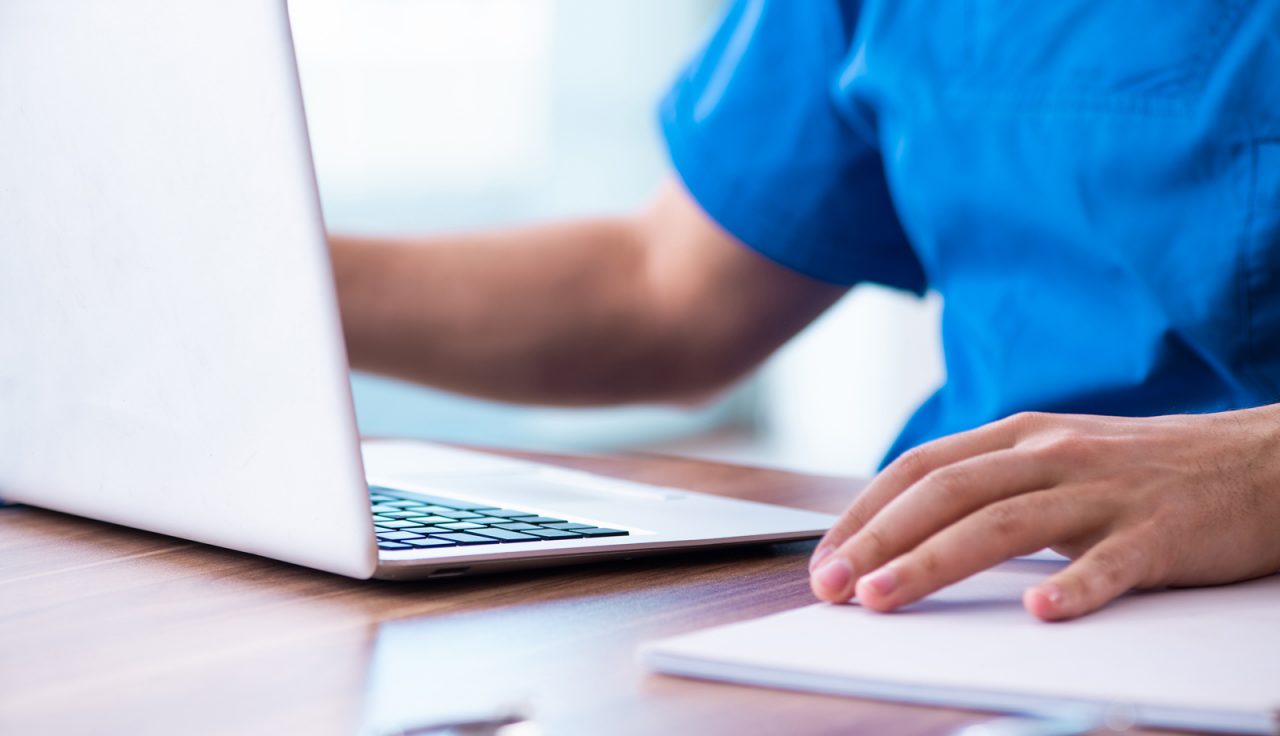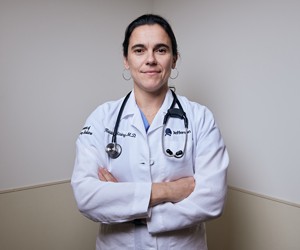It’s 8 a.m., and Kristin Rising, MD, MS, Associate Professor and Director of Acute Care Transitions in the Department of Emergency Medicine, is just coming off an overnight telehealth shift. She recounts a call she fielded during the evening from a middle-aged African American man who suffers from congestive heart failure and high blood pressure.
“He didn’t have health insurance, hasn’t been able to see a primary care doctor for more than a year, and hasn’t been able to get his prescriptions filled,” she says. Without the proper medical attention and medication the patient was at high risk for succumbing to advanced heart failure. But because he was able to connect with a physician via telehealth, he was evaluated, received his prescriptions, and is now in contact with social workers and support staff to ensure ongoing care.
“For a lot of people in underserved communities, telehealth can help bridge gaps in care and identify needs that would otherwise go unmet before they become severe,” Rising says.
Jefferson, which has been at the forefront of telehealth initiatives, recently received a boost to its program from three grants—a $922,000 grant from the Federal Communications Commission COVID-19 Telehealth Program, a $75,000 gift from the TD Charitable Foundation, and a $25,000 community grant from CVS/Aetna.
The grants are being used to bring much-needed healthcare to vulnerable communities through the purchase of tablets, computers, and remote monitoring equipment, as well as through subsidizing supplemental technical support and Internet access.
“Telehealth is particularly critical for people in underserved areas,” says Dominique Goss, senior manager of strategy for the TD Bank Social Impact Group. “It bridges access to care; it mitigates some of the barriers by allowing people access to a doctor by a mobile phone or a tablet.”
TD Bank, longstanding partners with Jefferson, made the commitment to sponsoring projects for the at-risk community before the rise of the pandemic through funding initiatives such as CoLab, a converted Airstream trailer that brings health screenings, resources, and education into vulnerable neighborhoods.
“It was a precursor to what is happening now,” Goss says, noting that telehealth brings medical care to where the people live. “Access to basic health needs is a human right; supporting that is just the right thing to do.”
Access to care and social determinants of health have been amplified by the COVID-19 crisis. The health disparity gap impedes members of underserved communities from obtaining care for both acute and chronic medical conditions, such asthma, diabetes, heart disease, high blood pressure, and obesity, which are more prevalent in those populations. In addition, it allows those without medical insurance to seek care at a low cost—$49 per visit, which is a fraction of the cost of a doctor’s appointment or trip to the emergency room or urgent care facility.

